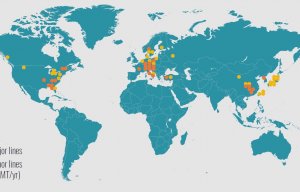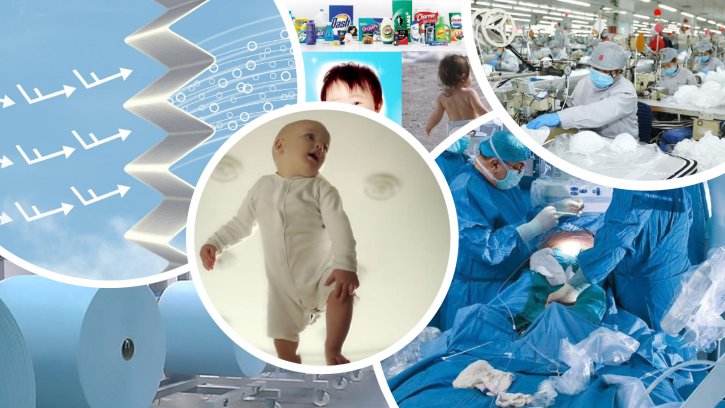
Airlaid nonwovens to grow 7.7% year-on-year to 2027
Experience of the Covid-19 pandemic will underpin future growth, Smithers predicts.

26th November 2021
Innovation in Textiles
|
Akron, OH, USA
Absorbent hygiene products (AHPs), wipes and industrial nonwovens will all contribute to further growth in the world demand for nonwovens over the next five years, according to a new report by Smithers.
In The Future of Global Nonwovens to 2027, overall global consumption in 2021 is predicted to reach 12.3 million tons, with a value of $51.86 billion.
This reflects a market that has performed well over the past two years, with a surge in the demand for wipes, medical nonwovens and meltblown facemask substrates in particular having offset slackening demand in many industrial segments due to manufacturing shutdowns during the pandemic peak in 2020.
Total nonwoven volume will increase to 13.4 million tons worth $56.4 billion, at constant prices, in 2022. The experience of the Covid-19 pandemic will underpin future growth – there will be extra demand for medical and higher grade PPE nonwovens in future years, as manufacturing capacity is reassigned as a strategic necessity in protecting against repeat outbreaks.
Smithers tracks overall market expansion proceeding at a compound annual growth rate (CAGR) of 6.7%, by value, across 2022-2027. This will yield a market worth $77.84 billion in 2027, with 18.65 million tons of nonwovens consumed. Over the forecast period, total surface area will increase from 375.3 billion square metres to 544.1 billion square metres, witnessing a faster CAGR than for overall tonnage, as new lower base weight substrates are introduced.
Landscape reshaped
The commercial landscape for nonwovens has been reshaped by the experience of Covid-19. Raw materials and shipping price increases will continue to be an immediate priority, while in the medium term, there will be an oversupply of meltblown as the immediate need to make protective facemasks recedes.
The search for more sustainable and compostable nonwovens will see increased demand for lyocell, rayon and other non-polymer fibres in the next generation of nonwovens. In multiple nonwoven segments there is a renewed imperative to develop more sustainable substrates, including those based on cellulose or biopolymers. This aligns with brand owner priorities in many consumer segments, as well as responding to legislation, including the implementation of the Single-use Plastics Directive in the EU and new measures on wipe flushability.
Smithers’ research tracks the market outlook for four major nonwovens processes – airlaid, drylaid, spunlaid and wetlaid – across 19 durable and disposable end-use applications. It shows that spunlaid remains the most widely used nonwoven web forming process – accounting for a projected 49.6% of all nonwovens consumed in 2022. Despite being highly dependent on polymer materials – and hence under pressure from a sustainability perspective – spunlaid will continue to grow its market share. It will increase to a 55.2% market share by volume in 2027, driven by new demand for hygiene products in developing markets, primarily in Asia.
There will be solid demand for both wetlaid and airlaid nonwoven substrates over this period, though there is a possibility of a capacity shortfall before 2025, unless new airlaid lines are built.
Drylaid demand growth, while still healthy, will fall behind the market average. In wetlaid there will be some specific market opportunities across 2022-2027, including greater demand for double re-crepe (DRC) in wipes, and speciality wetlaids as battery separators for the booming electric vehicle segment.
As nonwoven markets continue to evolve, a greater emphasis will be placed on smarter supply chains, with improved visibility, communication and inventory management all contributing to efficiencies.
All of these market trends are analysed and quantified in detail in the new Smithers report.

Business intelligence for the fibre, textiles and apparel industries: technologies, innovations, markets, investments, trade policy, sourcing, strategy...
Find out more